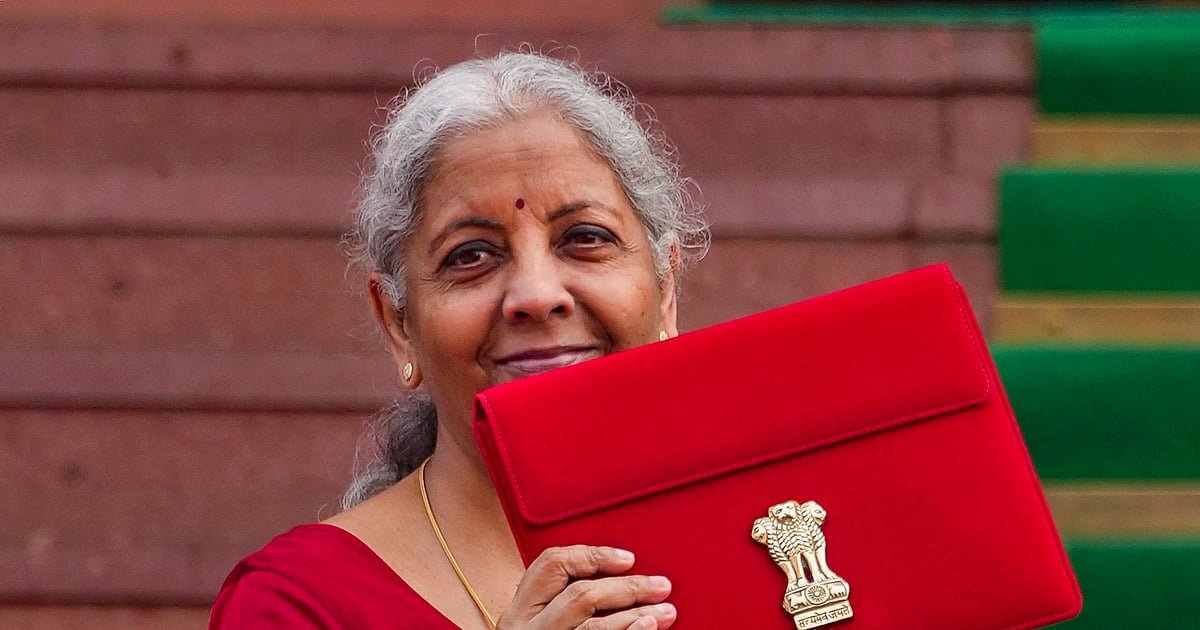 |
|
The Union Budget 2025-26, presented on February 1st, unveiled significant allocations for the education sector in India. A total of ₹1,28,650 crore has been earmarked for education, divided between the Department of School Education and Literacy (₹78,572 crore) and the Department of Higher Education (₹50,078 crore). While Finance Minister Nirmala Sitharaman emphasized the government's commitment to achieving 100% good-quality school education as a cornerstone of 'Viksit Bharat' (Developed India), the actual increase in budgetary allocation proved to be modest. The allocation for FY26 represents a rise of approximately ₹8,022 crore (nearly 7%) compared to FY25. However, this increase is insignificant when viewed as a percentage of India's GDP, remaining virtually unchanged at around 0.36%, only slightly down from 0.37% in the previous fiscal year. This relative stagnation in funding raises questions about the government's commitment to achieving its ambitious education goals, despite the rhetorical emphasis on quality education.
A key focus of the budget is the enhancement of infrastructure and technological capabilities within the education system. The Samagra Shiksha scheme, a consolidated program aimed at improving schooling opportunities and learning outcomes, has received a substantial boost, with its allocation increasing from ₹37,500 crore in FY25 to ₹41,250 crore in FY26. This represents a significant investment in strengthening the foundation of the education system. However, the allocation for the Pradhan Mantri Poshan Shakti Nirman (PM POSHAN) scheme, crucial for preventing school dropouts by providing mid-day meals, saw only a minor increase, rising from ₹12,467.39 crore to ₹12,500 crore. This comparatively small increment may hinder the scheme's effectiveness in combating malnutrition and improving school attendance, particularly in underprivileged areas.
The budget also highlights a commitment to strengthening higher education, particularly in science, technology, engineering, and mathematics (STEM). The expansion of infrastructure at five new IITs established after 2014 is a key initiative. Furthermore, IIT Patna will see an expansion of its hostel and other infrastructural capacities. A significant investment of 50,000 Atal Tinkering Labs will be established in government schools over the next five years, empowering students to engage with STEM concepts hands-on using advanced equipment. This initiative could play a crucial role in fostering innovation and scientific temper among young learners. The establishment of a Centre of Excellence in Artificial Intelligence (AI) for education, with an outlay of ₹500 crore, underscores the government's recognition of AI's transformative potential in education. This centre will likely focus on developing AI-powered educational tools and resources, thereby enhancing the quality and accessibility of education.
Beyond infrastructure improvements, the budget also acknowledges the importance of language diversity in education. The launch of the Bharatiya Bhasha Pustak Scheme, aiming to provide digital Indian language books to students, is a significant step towards promoting multilingualism and ensuring inclusivity in education. This initiative addresses the diverse linguistic landscape of India and will likely improve accessibility to quality educational material for students from various linguistic backgrounds. The budget, while demonstrating a commitment to enhancing various aspects of the education system, faces scrutiny regarding its allocation strategy. The relatively minimal increase in overall education spending, despite ambitious goals, raises questions about the government's long-term commitment to achieving universal access to quality education. Future budgets will need to reflect a more substantial commitment to funding in order to truly realize the vision of 'Viksit Bharat' and provide the necessary resources for the transformative initiatives outlined in the current budget.
In conclusion, the Union Budget 2025-26 demonstrates a multifaceted approach to improving the Indian education system. While significant investments are being made in infrastructure development, AI initiatives, and promotion of STEM education, the limited overall increase in budgetary allocation warrants further examination. The success of the proposed initiatives hinges on efficient implementation and consistent funding in subsequent years to ensure that India's education system effectively supports its future development goals. The prioritization of initiatives such as the Atal Tinkering Labs and the Centre for Excellence in AI reflect a forward-looking approach towards equipping the nation's youth with the skills required for the 21st-century job market. However, sustained investment and effective monitoring are crucial to ensure that these ambitious plans translate into tangible improvements in the quality and accessibility of education for all Indian students.
Source: Union Budget 2025: Focus on AI centre, infrastructure at IITs, STEM labs
